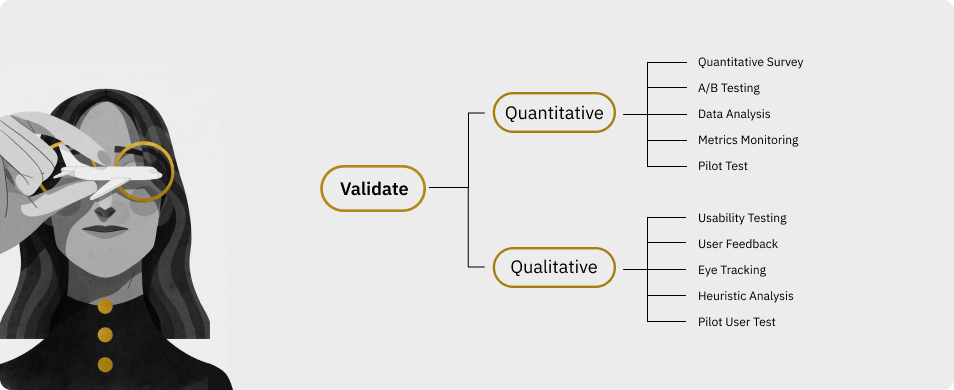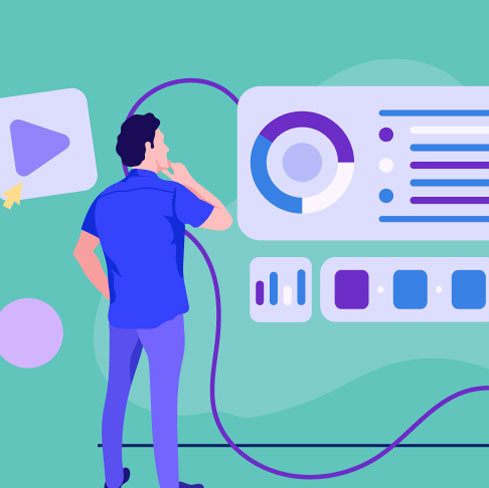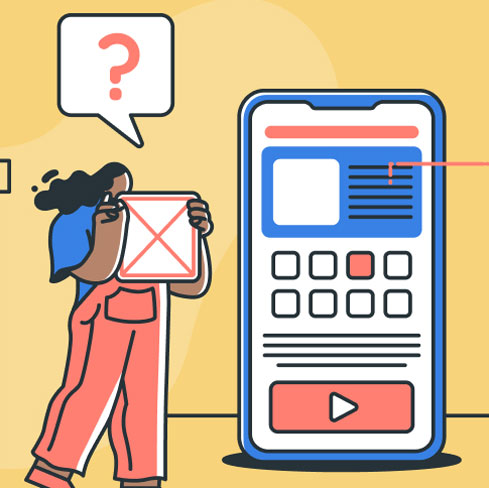Significance of Validating Product Design
March 13, 2023 | Read Time : 3 mins
Table of Contents
Design is merely the first stage in the process. It’s a conversation starter.
Validating your design appropriately is the second and more crucial phase. But how exactly do you do this? There is no secret to it; all you need is input from suitable test consumers.
Many designers are inclined to just acquire approval from stakeholders and move on. For certain design projects, this could be a good starting step, but you should always try to get the design in front of the target audience to make sure everything is correct.
What is UX Validation?
- Once an application prototype is usable, UX Validation takes place. This process involves testing the application’s usability and ensuring that users get genuine value from it as it is currently designed. The outcomes of the tests performed at this stage will inform designers of the need to retool the product.
- The validation procedure should be carried out for every application iteration. The designers will make changes to the UX after receiving input from a round of validation. A successful technological solution should fix the issue and be enjoyable to use at the end of the process.
- The validation phase may occasionally be a quick one. A few small adjustments should be sufficient if the current version of the application is well-targeted to tackle a problem and the UX works properly. In other circumstances, more significant modifications will be required. These iterations are worthwhile as long as companies end up with a solution that solves their specific problems.

Best practices in UX Validation
The phases of UX Validation involve a hypothesis-verification process that starts with discovery. Validation uses the framework established earlier on the targeted issue and the appropriate audience. At this point, designers will need to:
- Choose the appropriate audience segment: Users that test an app throughout the validation process shouldn’t merely fit certain demographic requirements. They must be people facing the same issue the design is meant to address.
- Create relevant testing criteria: Since every app is unique, the best usability testing strategy will rely on how the product is intended to function. Rather than merely asking consumers their opinions, it’s important to ensure that the tests accurately reflect how users are actually interacting with the solution.
- Integral interpretation of the findings: Designers may start thinking about the ideal changes for their software once they have the data at hand. It’s important to adhere to the data rather than let your assumptions guide you.
- Iterate and repeat: After changes have been made, designers may create a new prototype and observe how users respond. When people regularly gain value from the solution and enjoy the UX, it is ready for a wider release.
Sometimes choosing a target population for validation is simple — designers may recruit test participants among friends and family. In other instances, an app may need to be more creative if it solves a niche problem.
Once the results of those tests are out, the required changes may be minor or major. The ideal approach is to follow the outcomes rather than what they indicate. In rare instances, a UX may need to change by 50% between validation rounds. While doing this might first appear excessive, the results might be worthwhile.






